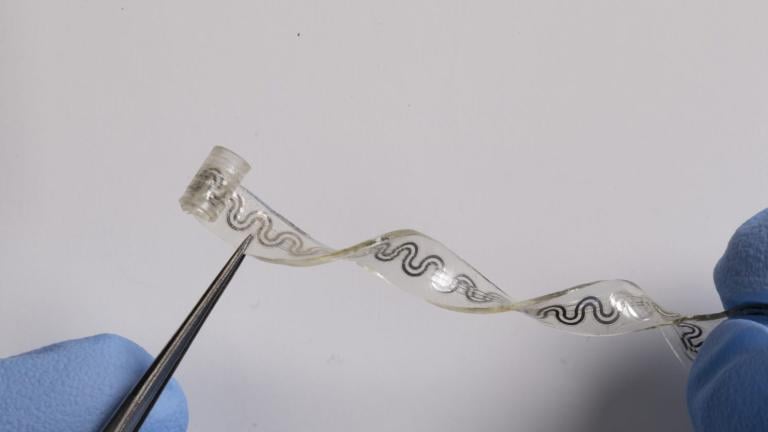Quantum technology is expected to transform our world – from the creation of ultra-fast and powerful quantum computers, to sensors capable of detecting the movement of a single atom, to communication networks that can’t be hacked.
And Chicago appears to be at the center of this quantum acceleration, with the Department of Energy announcing last week that two of five new national quantum research centers will be in the Chicago area – at Argonne National Laboratory and Fermilab. Each will receive $115 million over the next five years to further their research.
David Awschalom, senior scientist at Argonne who also leads the Quantum Exchange at the University of Chicago, says Chicago’s position in the field of quantum research is analogous to Silicon Valley some 30 years ago.
“It’s a combination of thoughtful planning and serendipity,” says Awschalom.
To build quantum technologies you need atomic scale precision tools to understand and manipulate information. And fortunately for the Chicago area the presence of Fermilab and Argonne, as well as world-class research universities, means that Chicago is “perfectly positioned to drive this field,” says Awschalom.
Add to that the fact that the University of Illinois has one of the world’s best engineering programs and Awschalom says that “when you put all of those things together Chicago is positioned to be and has become a global leader in quantum engineering.”
The Fermilab-led quantum research center, called the Superconducting Quantum Materials and Systems Center, or SQMS, aims to use the Department of Energy money to build a “beyond-state-of-the art” quantum computer using superconducting technologies.
“Compared to a classical computer, quantum computers promise to have more computational ability, more computational power. And that’s because they take advantage of very – in a sense very counterintuitive to our minds – principles that are called superposition and entanglement,” says Anna Grassellino, senior scientist and deputy chief technology officer at Fermilab and director of the SQMS center.
Grassellino says that for certain applications, quantum computers are “much more powerful than any of the classical computers that we have today – even the most powerful supercomputer.”
To develop quantum technology requires drawing on the expertise of the national laboratories, academia and private industry.
“It’s really a unique mix,” says Grassellino. “I think this is really what is so important because quantum computing is such a multi-disciplinary field that requires expertise from many, many different fields. If you only did it at the national level or only at universities you would not succeed. You must bring all the different components together.”
 Two new research centers headquartered at Argonne National Laboratory and Fermi National Accelerator Laboratory will boost transformational breakthroughs in quantum information science. Here, Argonne scientist Dafei Jin observes a dilution refrigerator—a cryogenic cooling device for materials used for quantum computing. (Photo by Mark Lopez / Argonne National Laboratory)
Two new research centers headquartered at Argonne National Laboratory and Fermi National Accelerator Laboratory will boost transformational breakthroughs in quantum information science. Here, Argonne scientist Dafei Jin observes a dilution refrigerator—a cryogenic cooling device for materials used for quantum computing. (Photo by Mark Lopez / Argonne National Laboratory)
The Argonne-led Q-NEXT center brings together 22 partners from national laboratories, universities and leading technology companies. Awschalom, the director of the center, will lead researchers in the development of two national foundries: one at Argonne and one at Stanford University. They will develop and supply quantum materials and devices that will allow universities, national labs and industry to develop a network of quantum sensors, build secure communication systems, and prove the technology. It will also focus on building quantum connections to link quantum systems.
“For quantum technologies, we literally need quantum materials where individual states of matter can be manipulated. And those materials need to be built, characterized and standardized for companies,” says Awschalom. “If you think about foundries in the old days making steel and aluminum – this will be a basis for creating quantum materials for distribution.”
That will then allow researchers to develop the technology for practical applications.
One of the most exciting areas of development is the creation of quantum sensors.
Quantum bits – the basic unit of quantum information and building block of quantum technology – need to be shielded from the environment when used to build quantum computers because they are sensitive to any kind of environmental change. That sensitivity means they have extraordinary potential as sensors.
“If you took that quantum bit and turned it inside out and exposed it to the world, it’s an extraordinarily precise sensor of electric fields, magnetic fields, vibration and temperature,” says Awschalom. “So anything that perturbs them, even one vibration of a lattice, one atomic level displacement, will be seen clearly by these quantum sensors.”
That quality could be used to develop machines that could measure minute vibrations of the planet to potentially predict earthquakes. It could also be used to develop a new generation of ultra-sensitive MRI scanners.
“If you need an MRI scan, you go inside a large magnet and it’s literally billions of billions molecules that are being imaged. But imagine if you could do this with a resolution of one atom and one molecule,” says Awschalom. "You could understand how proteins operate inside us – which today barely a few percent of our proteins are understood – the structure and functional relationship and how they respond to pharmaceuticals. How they respond to disease. How they respond to viruses. And if you have a technology that can suddenly measure this precisely it will revolutionize areas of biochemistry and medicine. And that’s just one example of the use of a quantum sensor.”
While quantum sensors are not yet widely deployed, they are already being used in laboratories across the country.
But beyond such practical applications, Grassellino says quantum sensors and quantum computers could also help solve one of the greatest mysteries of modern physics: the nature of dark matter. While scientists infer its existence from its gravitational effects, what exactly dark matter is remains a mystery.
“One of the things that our center will try to explore is to try to understand the nature of dark matter,” says Grassellino. “We know that the world around us is made up to a very large percentage of dark matter but there has not been the capability yet to really explain what it is. We think that these much more sensitive quantum sensors will allow us to prove or disprove the existence of dark matter and understand its nature.”
But while researchers can imagine many different ways to use quantum technologies, Awschalom says it is the yet to be imagined uses that most excite him.
“It will be transformational and what I would argue is most exciting is that it’s very hard to predict where those transformations will take place,” says Awschalom. “It is sobering when you think back 50 years ago to when the first internet was developed and people were trying to think about how it might impact our lives, it’s hard to believe that anyone could have imagined the impact that the internet has had. So when you try to think 50 years into the future, and where quantum technology will take us... we can be pretty confident that we are not quite hitting the most important things.”
Note: This story will be updated with video.








